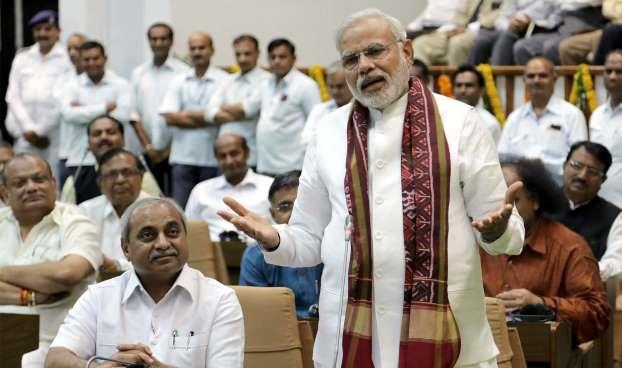December 15, 2014
When Nick Petit and his partner set off to start Kahoots, they did what many startup founders do, they split the equity 50/50 and began working nights and weekends to make their vision a reality.

Dividing Poker Chips
December 15, 2014
When Nick Petit and his partner set off to start Kahoots, they did what many startup founders do, they split the equity 50/50 and began working nights and weekends to make their vision a reality.

Dividing Poker Chips
It wasn’t long, however, before they realized that things weren’t going to be quite so straight forward. Nick quit his job and committed full time to the business and then brought on some important advisors and a new employee. The company was split 50/50, but the work going into it was much different.
It is quite common for founders to split equity in their company early on in the process and an even split is the most likely scenario. According to Duke sociologist Martin Ruef, over 90% of two-person teams and over 87% of four-person teams split equity evenly. This is called a “fixed” split because there is usually no thought to how the split will change over time. An even, fixed split is quick, clean and rarely hurts anyone’s feelings—at first. The problem is that no matter how good the intentions are, when things change—and they always do—a fixed split simply does not work. At best it creates mild frustration; at worst it will destroy the company.
Ask anyone how to split equity and most of them will tell you that it is about relying on guesses and assumptions about the future, applying rules of thumb, and hoping everyone does what they say they’re going to do. With no clear answer, it’s no wonder that a fixed, even split is the norm. It just seems simple, and it is simple—until you have to unwind the damage it causes.
Little do most people know, there is an exact solution to this problem. There is a way to determine exactly how much equity each person deserves without guessing about the future. It’s called a dynamic equity split and, specifically, the Slicing Pie model that’s been developed for determining perfectly fair equity splits in early-stage, bootstrapped companies.
Rather than doing an even split or guessing about the future, the Slicing Pie model relies on the fair market value of the various contributions made to a startup including cash, ideas, time, relationships, supplies, equipment or facilities. When people contribute any of these things to a startup, they are risking what they would have otherwise been paid for the same contribution to someone who had the means to pay. In other words, they are risking the fair market value of the contribution.
Everything has a fair market value. The fair market value of time, for instance, is the salary a person would command for a certain type of work. The fair market value of an idea is a royalty on revenue. The fair market value of a relationship is the commission on a sale generated, or a finder’s fee on investment secured. For every contribution, there is an amount that someone, with the means to pay, would pay. Fair market value is easy to know, future value is impossible to know.
Using fair market value, the Slicing Pie model applies a standardized allocation framework that allocates “slices” in the company pie based on the fair market value of the contribution and a multiplier for risk. A person’s share is simply their slices divided by the sum of everyone’s slices. It changes over time to ensure that everyone always has exactly what they deserve to have.
Convert all contributions to “slices” by multiplying the unpaid portion of the fair market value of the contribution by a risk multiplier (I recommend two for non-cash contributions and four for cash contributions):
Slices = Fair Market Value x Non Cash or Cash Multiplier
Calculate share for each individual:
Individual’s Share (%) = Individual’s Slices ÷ All Slices
Allow the model to adjust over time so it stays fair. The model will always tell you exactly what each person deserves to have—no more and no less.
When the company can afford to pay people, it can—which will reduce or eliminate the allocation of slices. When profits are generated, a person’s share determines how much they get!
Once equity is allocated, you need a mechanism for getting it back if things don’t work out. When fixed equity splits go bad the result is usually absentee owners, unfair buyouts and frustration. The Slicing Pie model has a recovery framework that determines how equity is recovered and how much is paid, if any, to departing employees. The model imposes consequences on the party that causes the separation. So, if an employee chooses to behave in a way that jeopardizes the future of the company, their slices would be subject to reduction or elimination if they quit or were fired. This forces employees to think twice before making choices that have a negative impact on the company.
Conversely, if the company makes decisions that jeopardize the future of the employee, the employee would enjoy a higher buyout price based on their number of slices. For instance, if the employee was terminated without cause they would be entitled to a buyout price based on the risk they took and the risk multiplier. This forces companies to think twice before making decisions that negatively impact the employee.
The model keeps everyone aligned and allows founders to mitigate the damage caused by traditional fixed/even splits. Implementing the model is easy and requires some basic recordkeeping. Dallas-based startup attorney David Coon helps clients execute dynamic equity agreements on a regular basis and feels that implementation from a legal and tax standpoint is straightforward. “Avoiding a dispute in the first place is always a top priority,” says Coon, “the Slicing Pie model does that by capturing the real intent of the parties—to treat each other fairly. Traditional models are a breeding ground for messy breakups that ultimately can kill the business.”
When Nick saw that his 50/50 split was going to cause problems, he and his partners decided to apply the Slicing Pie model. His partner continued to work part time allowing Nick to receive a portion of the equity that more accurately reflected the difference in commitment. Using the model, advisors and employees each got shares that properly reflected their contributions. Everyone knew that no matter what happened, they would always have what they deserved.
The model produced a clean cap table and investors were delighted to see a logical structure that aligned the interests of the team. Nick raised over $1 million in funding and is looking forward to a bright—and fair—future!
Courtesy: Quartz







































































































